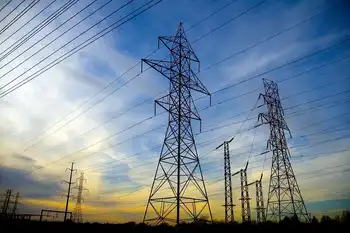SMUD tests to make renewable power reliable
By Sacramento Business Journal
CSA Z463 Electrical Maintenance
Our customized live online or in‑person group training can be delivered to your staff at your location.

- Live Online
- 6 hours Instructor-led
- Group Training Available
The Sacramento Municipal Utility District plans to demonstrate how businesses might be able to guard against such blackouts by creating their own “microgrids.”
The utility has received a $1.6 million grant from the California Energy Commission to set up a demonstration microgrid that would keep heating and cooling operations running at its S Street headquarters even if thereÂ’s a blackout on the main grid. Backup power systems are routine at large facilities, but SMUDÂ’s will operate more seamlessly than most.
“The system they’re using is a little bit more high-tech,” said Bob Panora, president of Tecogen Inc. of Waltham, Mass., which makes the combined heat-and-power generators SMUD will use. “The power can go out and you wouldn’t even see any lights blinking or your computer go out. It can happen many times a day and you wouldn’t notice.”
The system will integrate an on-site photovoltaic array and natural gas-fired generators to produce up to 310 kilowatts. If there is a blackout, a high-tech switch will quickly isolate the system so it can operate as an island separate from the rest of the grid.
SMUD senior project manager Mark Rawson said microgrids are “an emerging technology.” If the test works, SMUD might be able to help customers replicate its system.
“There are still some technical risks,” Rawson said. “We want to understand those before we unleash it on a customer.”
The biggest question is the cost. Tecogen sells its most basic generators for about $1,100 to $1,200 per kilowatt. Higher-end systems cost several thousand dollars or more. That will be a minor cost component of SMUDÂ’s microgrid.
“The real question is what is the added cost of this very high-tech switch,” Panora said. “They’re buying one that’s being made especially for this project.”
SMUD is testing what Rawson calls the “smart switch.” It would allow a customer with on-site generation to disconnect from the main grid without having to shut off its own generators.
Similar technologies are already in use for some commercial customers, such as hospitals. But most businesses canÂ’t afford them.
“In the smaller-scale systems, there’s not a cost-effective solution,” Rawson said.
SMUD is hoping the new technology will cost less. SMUD estimates it will spend $1.4 million on the project. Combined with the Energy Commission grant, that would bring the total to about $3 million.
For a company that needs a reliable source of power, the system might be worth the price.
California utilities have a state mandate to obtain 20 percent of their energy from renewable power sources by 2010. Gov. Arnold Schwarzenegger issued an executive order Nov. 14 pushing the renewable power requirement up to 33 percent by 2020.
The California Energy Commission and other electric industry analysts warn that the network of high-voltage electric lines in the state might not be able to handle the influx of power from an increasing number of locations. Wind, solar and other weather-dependent energy sources send fluctuating amounts of power into the grid.
On-site power generators can help buffer a facility against those fluctuating voltages, but only if itÂ’s equipped with special control systems. Federal rules require power producers connected to utility-owned transmission lines to disconnect from the grid during power outages. A sudden surge of electricity into the grid during an outage could electrocute a utility repairman fixing a line.
Robert Lasseter, an emeritus professor of engineering at the University of Wisconsin-Madison and the developer of the microgrid system, said the smart switch also allows companies to disconnect from the grid if thereÂ’s any wiggle in voltage and reconnect when voltage normalizes.
“Companies with big server farms, like credit companies, have very complex uninterruptible power supplies,” he said. But the smart switch would be more flexible, able to disconnect from the grid in less than eight milliseconds if voltage drops as little as 10 percent. The microgrid would also sync back in with the main grid without any disturbance in power use.
Tecogen licensed the technology and incorporated it into small power-and-heat generators.











